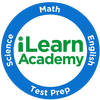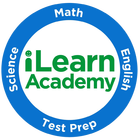|
[This is part one of a two part series on college applications.]
Despite the disruptions going on right now, one thing remains certain: College Applications are due soon. For all our seniors preparing to embark on this journey, and anyone else interested in higher learning, we offer the first entry in a two-part guide to applying for college. This entry focuses on how to decide where and how to apply, while the second will deal with the more practical steps of applying. Part One: Decide Where You Want to Apply The United States alone boasts over 4000 colleges and universities, but most students only have the time and money to apply to ten or so. Whittling down the options seems a daunting task. Luckily, many great resources can help you make an ideal list of colleges for application. We most enthusiastically recommend the website Cappex; through your free account, Cappex helps you identify realistic target schools based on your grades and scores, connect you to interested programs, and locate scholarships and other sources of funding for your academic future. We strongly suggest you sign-up for this or a similar service, but for now we will detail some of the major themes you should consider when helping your student select where to send applications.
Of course, if your student already has a firm idea of what discipline they want to study or career they wish to enter, a school's specific academic program and faculty may figure more prominently into application decisions than the type of school in question. By discussing your student's goals and applying them to the options described above, you can help your student balance financial, social, and professional considerations. For more information including lists of schools matching the different types, visit the Common App and Coalition App online.
0 Comments
Socializing plays an important role in healthy childhood development, but with many schools limiting or eliminating in-person instruction due to the coronavirus pandemic, students risk missing out on crucial interaction with teachers and peers. Add to this general social distancing guidelines and most kids will barely leave the house at all this fall. But never despair! You can help your kids socialize while protecting them from dangers both online and off. We present ten great ideas for your kids to socially engage while staying safe at home.
 With a new season of SAT/ACT testing and college applications, we wanted to address a common question: What is Superscoring? To answer it directly, it's when colleges allow students to average their scores from multiple test attempts. Now this doesn’t mean you can mix and match between the SAT and ACT. Instead, if you take either the ACT or SAT test multiple times, you can mix and match sections to get your best average score. Here's a hypothetical example: A student takes the SAT and gets a sub score of 500 on the Reading/Writing and 700 on Math. Their SAT score would be 1200. Not a bad score, but one that can be improved. Now, let's assume the next time the student takes the test, they improve their Reading/Writing score. This time they get 700 on this section. But if they focused only on half the test, we assume their Math score dropped to 600. They still went up (1300), but it is a bummer that they did worse on a different section each time. Here's where Superscoring comes into play. Colleges will look at both tests and take the best section scores of each. So, now the student has the 700 on Math from the first test, and the 700 on Reading/Writing from the second. A 1400 is better than either individual test and this can help you get into the more selective schools. This same process works for the four sections on the ACT as well (Reading, English, Math, and Science). Unfortunately, at this time you need to take the full test to be able to Superscore, however, the ACT & SAT are evaluating whether or not to allow students to take only one section of the test in the future. Check out these additional Superscore FAQs from the ACT and SAT .  Superscoring is a great feature that all students should keep in mind this fall. What’s the catch, though? Well, here are a few things to remember:
*For SAT: https://blog.prepscholar.com/which-colleges-superscore-the-sat
Should your children stay home and miss out on in-person instruction? Many parents, students, and teachers are on edge at the start of the school year amidst the coronavirus pandemic. Many fear the added exposure of mingling with dozens or potentially hundreds of students a day will not only risk their children's health, but other family members as well. Adding to the stress, parents are concerned their children's education has already suffered from the digital learning experience and they are looking for solutions. An excellent alternative is to consider a small group "learning pod". According to a recent study by the New York Times, the risks of exposure to the virus are significantly lower in a small group or "pod" while the student maintains a high quality, teacher-led education. If you have attempted to form your own learning pod, you may find the task is overwhelming in trying to find a safe environment, research quality instructors, and gather the right mix of students in the same age group and skill sets as your own child. Learning pods, also described on Facebook as microschools, homeschool pods or pandemic pods, are a great alternative if you follow the right guidelines and have the right resources. iLearn Academy's Learning Pod. We take the work out of finding tutors by hiring certified and highly experienced teachers, offer a very *safe and clean academic environment, and teach students with similar skills in a private or small group setting. Students can bring their laptops to our center during school hours led by an in-person teacher that will support students' learning while taking the school's online teaching so that the student remains focused and on-task. Another option is for students to come to our center afterschool and receive additional instruction or homework help in subjects such as math and English. We can also offer test prep courses such as PSAT 8/9 and ACT/SAT. Parents can bring a group of two to four students and we will differentiate our instruction based on each individual's skill. We can also offer an interactive and live online session with a more personalized lesson plan versus the school's online sessions. We will support students to master their learning with our experienced teachers and effective teaching methods. If you decide to create your own learning pod, here are the top three crucial steps to consider:  1. Find Quality Instructors. One benefit of the at-school experience is the multitude of teachers that are available and disciplined in a specific subject, and experienced instructing at a particular grade level. Attempting to re-create the at-school experience is difficult: tutors may not have the broad skill sets to cover multiple subjects let alone follow a grade appropriate curriculum. It can also be time consuming and hard to find multiple teachers that can fit into your small group's schedule. In addition, parents often times lack the right assessment tools needed to confirm the teacher is doing a great job or meeting the minimum state standards. You might be able to follow the school's curriculum, though be cautious as the tutor has a tendency of using their own materials and will likely not have enough exposure to the school's materials to teach effectively. Nevertheless, below are a few questions you should ask the tutor in the interview process:
 2. Create a Safe, Centralized Location. Some families have opted to gather at a particular home or rotate from one home to the next. The Center for Disease Control and Prevention (CDC), offers a helpful checklist for virtual or at home learning. This includes the usual advice on frequent hand washing, social distancing, and face masks in addition to guidelines on social-emotional wellbeing of group instruction. By keeping a centralized location, an academic environment can be created using a systematic approach to cleanliness and a consistency with group activities and exercise between lessons. Of course, someone needs to enforce each person attending the group will follow the safety guidelines.  3. Gather Similar Students. One of the bigger challenges facing small group learning pods is finding the right mix of students with the same skill sets. One of your child's peers may be very good in math but weak in English. Unless the teacher is adept at handling a wide range of skill sets, this may limit your son or daughter's ability to excel in a particular subject. One of the most effective means of creating a learning pod is to join a local learning center that offers small group or in-person sessions. This alleviates the need to find and locate teachers as the centers have already vetted and trained the teachers. iLearn Academy offers small group or private instruction to support the local school 's online learning and helps students improve even further so that they may learn beyond their grade level skills.
Please give us a call today at 1-847-834-0791 to get started right away: Seats are limited. *iLearn Academy requires everyone entering the building to have a daily temperature check, wear masks or shields, and we disinfect the rooms after every lesson. We also limit the total number of staff and students to 18 people in our 2,500 square foot facility at any given time so we can maintain proper social distancing. |
Categories |
We make a personal commitment to ensure each student is well-prepared for the academic school year.
Dedicated to helping your student succeed.
©
iLearn Academy 2019



 RSS Feed
RSS Feed
